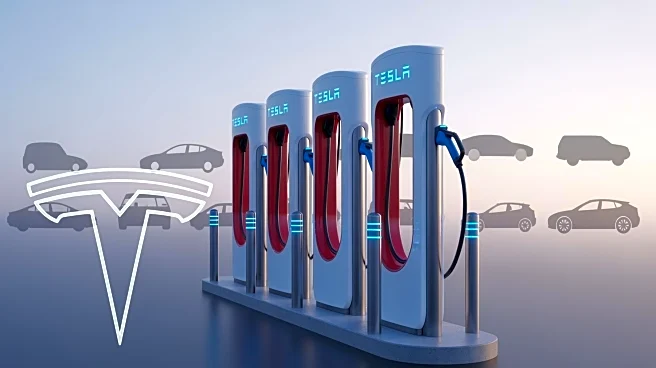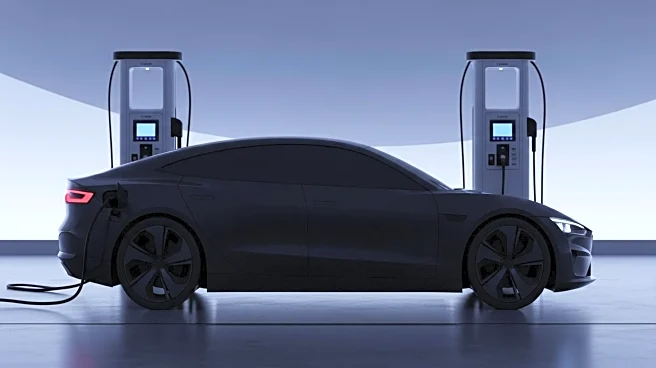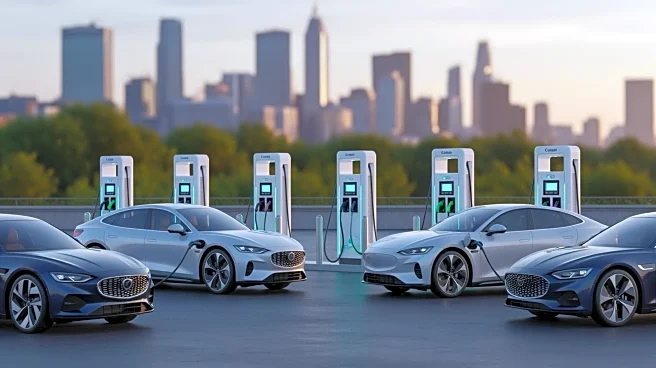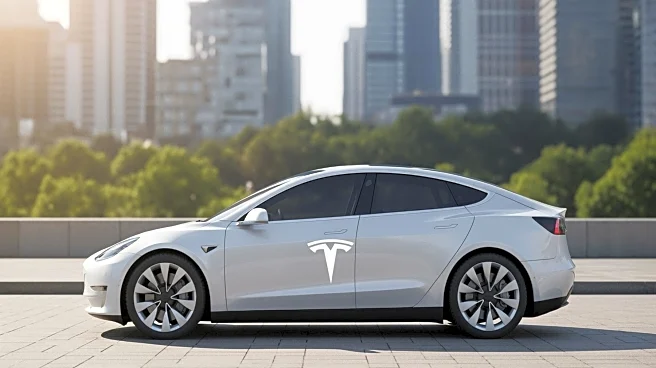What's Happening?
Tesla's market share in the U.S. electric vehicle (EV) market has decreased from 49% to 43.1% over the past year, despite remaining the largest seller of EVs in the country. This decline comes as competition intensifies and Tesla's brand value diminishes.
The company reported a 7% year-over-year increase in vehicle deliveries for the third quarter, marking a recovery after two consecutive quarterly declines. Tesla is also benefiting from a new incentive program in Texas following the expiration of the $7,500 federal EV tax credit. However, Tesla's sales have continued to decline in key European markets, dropping by 16% across 13 countries from September 2024 to September 2025.
Why It's Important?
The decline in Tesla's market share highlights the growing competition in the EV sector, which could impact Tesla's dominance in the market. The expiration of federal tax credits poses a challenge for Tesla and other automakers, potentially reducing consumer demand for EVs. Tesla's ability to adapt to these changes and maintain its market position is crucial for its future growth. The company's focus on new technologies, such as robotaxis and humanoid robotics, indicates a strategic shift to diversify its offerings and capture new market segments.
What's Next?
Tesla is expected to report its third-quarter results soon, with Wall Street eager to understand the company's demand expectations without the federal tax credits. The introduction of lower-cost variants of popular models like the Model Y and Model 3 may help offset price increases due to the loss of incentives. Tesla's strategic focus on robotaxis and humanoid robotics could play a significant role in its future growth, although these markets are yet to be fully developed.
Beyond the Headlines
Tesla's international sales challenges, particularly in Europe and China, underscore the competitive pressures from local automakers offering cheaper and higher-quality EVs. The company's reliance on EV sales for its business highlights the importance of maintaining its market share amid shifting consumer preferences and regulatory changes.














